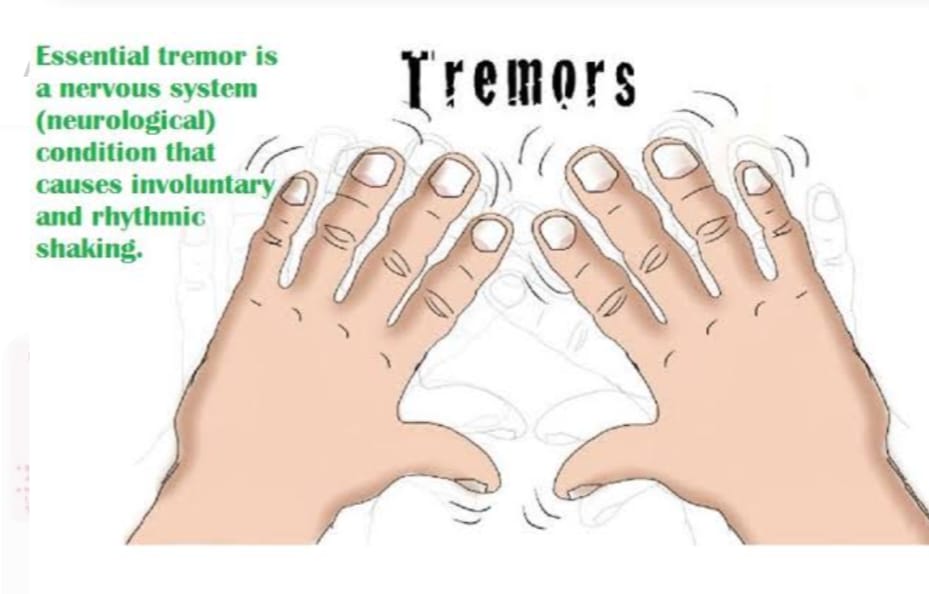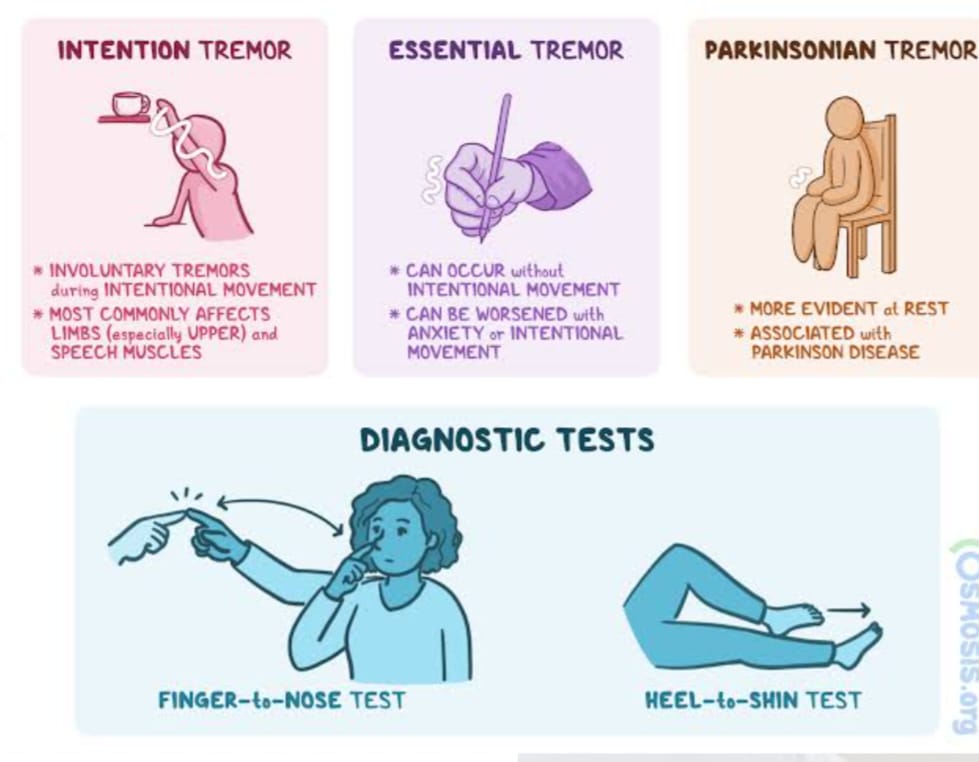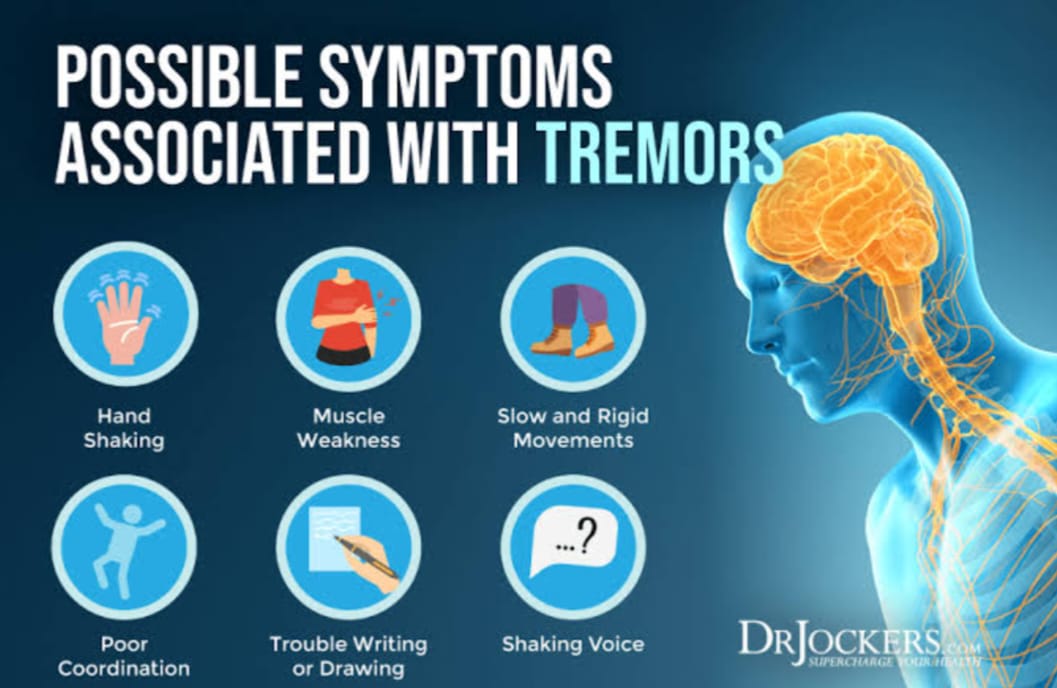Tremor
Tremors are unintentional trembling or shaking movements in one or more parts of your body. It is an involuntary, somewhat rhythmic, muscle contraction and relaxation involving to-and-fro movements of one or more body parts.
It is the most common of all involuntary movements and can affect the hands, arms, eyes, face, head, vocal cords, trunk, and legs. Most tremors occur in the hands. In some people, tremor is a symptom of another neurological disorder.
Causes:-
Neurological disorders or conditions that can produce tremor include multiple sclerosis, stroke, traumatic brain injury, chronic kidney disease and a number of neurodegenerative diseases that damage or destroy parts of the brainstem or the cerebellum, Parkinson`s disease being the one most often associated with tremor. Tremors develop when parts of the brain or spinal cord have difficulty controlling the muscles throughout the body.
Classification:-
Tremor can be observed at rest or/and during movement. More specifically, the following classification is useful in discussing tremors typically encountered in clinical practice: -Resting tremor- Tremor in the absence of voluntary movement and with body part fully supported.
-Postural tremor-Tremor while voluntarily maintaining posture against gravity.
-Kinetic/Action tremor-Tremor during voluntary movement.
-Task-Specific tremor-Kinetic tremor during specific, skilled movement.
-Orthostatic tremor-Tremor of lower extremities or trunk while standing in place.
Some of the better known forms of tremor include the following:
-Cerebellar tremor (intention tremor)
-Dystonic tremor
-Essential tremor
-Orthostatic tremor
-Parkinsonian tremor
-Psychogenic tremor (hysterical tremor)
-Rubral tremor
Symptoms and signs:-
The most common symptoms and signs of tremors include:• May occur occasionally, in episodes or at various intervals
• May affect head, hands, eyelids or other muscles
• Shaky, quivering voice
• Nodding of the head
• Worsens with voluntary movement
• Worsens with emotional stress
Diagnosis:-
The diagnosis is based on a careful assessment of the history and physical examination, although some tests, including positron emission tomography (PET) and single photon emission computed tomography (SPECT), are being investigated as diagnostic aids.
Treatment:-
There is no cure for most tremors. Symptomatic drug therapy is available for several forms of tremor. Surgical treatments include thalamotomy and deep brain stimulation. There are homeopathic remedies for tremors that brings hope to patients with this disorder.
Homeopathic remedies can control involuntary muscle spasms, shaking hands, twitches and tremors effectively. Homeopathic ingredients are safe and gentle to use on the body without being addictive. -It works quickly to facilitate a calmed mood and soothed nerves.
-Homeopathic remedy controls involuntary nervous tics, muscle spasms and jerking.
-Homeopathic remedy controls shakes, tremors, twitches.
-Homeopathic remedy relieves the effects of stress, worry and nervous tension, plus supports nervous system health.



